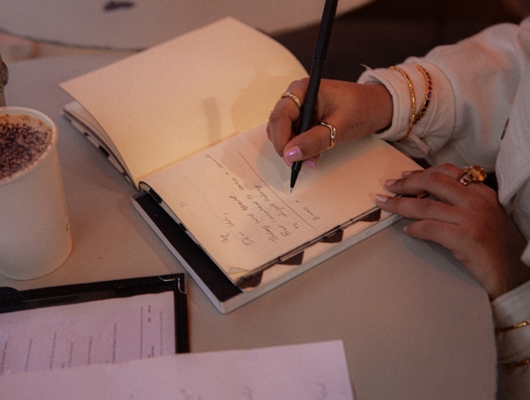Best Blogs
How to Spot Burnout and Come Back from It
26/06/2025
The funny (and frustrating) thing about burnout is that it’s not cataclysmic, nor does it announce itself when it enters your life, so it’s not like you can catch it out by its brash and obnoxious arrival.
Instead, burnout builds unassumingly, layering over time until one day you realise you can no longer move the way you used to. The mental fog, the Sunday night dread, the creeping cynicism, quiet but visible burnout signs.
Like with anything problematic in life that you want to reverse, recognising the oncoming signs is the first and best step. It’s not irredeemable! And there are ways to recover from burnout and help prevent it happening again.
So what is burnout anyway?
At its core, burnout is not simply exhaustion but emotional depletion. The best way to visualise it is by imagining the gap between what you're giving and what you're getting back; and that could be giving your energies to anything from work and relationships to hobbies and responsibilities.
A recent global study found that one in two Australians are affected by burnout, a stat that catapults us right to the top of the list of most ‘burnt out’ nations. So, for a country that prioritises wellness as much as it does, how have we let burnout slip under the radar?
It could be that we often mistake busyness and productivity – or the appearance of these things – for dedication. But humans aren't wired for perpetual sprinting. When everything is urgent, nothing feels meaningful, and that’s where burnout thrives.
Possible burnout signs:
-
- You always feel tired, even after sleep
- You’re emotionally flat and you’ve lost enthusiasm for activities
- You dread tasks you once enjoyed
- You get sick more often
- You’re uncharacteristically snappy and irritable
- You may be unusually forgetful
- You feel like you’re failing, no matter what you do
- Things feel urgent, but not important
- You struggle to switch off
- So how do we recover and prevent it?
Respect the reset
Sleep is the first thing we sacrifice, but it’s also the first line of defence. Guard your sleep like your sanity depends on it (because it does) and be strict with your sleep schedule and hygiene. As much as you can, go to bed at the same reasonable time every night and find a sleep routine that calms and settles you so that you’re resting your way.
Make space to be inefficient
The more you internalise and habitualise this, the more your actions will reflect this philosophy: not every minute needs to be optimised. Boredom isn’t laziness – it’s a kind of mental mulch. If you have to hide your tech, plan nothing for your weekends, or start a project and purposely not finish it, then do it! Being inefficient is not a sign you’ve lost your edge; it’s a sign you’re protecting it.
Rest, don’t just stop
Stopping work isn’t rest if your mind is still running the same loop. A good way to treat active rest is by doing what restores you, not just collapsing on the couch (unless that is what restores you…)
Do you have a creative hobby? Pets that need extra TLC? Friends and family that fill your cup? These sorts of meaningful activities help reset your nervous system, distract your burnout until it dissipates, and remind you of the larger picture outside work and responsibilities.
Rest can also look like socialising, sharing a meal with loved ones in the quiet, grounding sense that you’re still tethered to the world outside your inbox. Whether it’s a raucous dinner with ten voices talking over each other or a simple bowl of pasta with someone who knows when not to talk, social connection reminds us that we’re more than what we produce.
Don’t rush the bounce-back
How long does it take to recover from burnout? Recovery and coming back from burnout isn’t linear and it’s different for everyone. Energy comes back in blips, so the best thing you can do is not treat your return to form as a deadline.
It’ll be tempting to measure your recovery against who you were before the burnout, but that person was running on fumes. Start small. Pick one thing that feels manageable and let that be enough for the day. The key is to resist the pull of performative wellness, like ticking self-care off a list, and actually give yourself permission to be slow, unrushed and human again.



